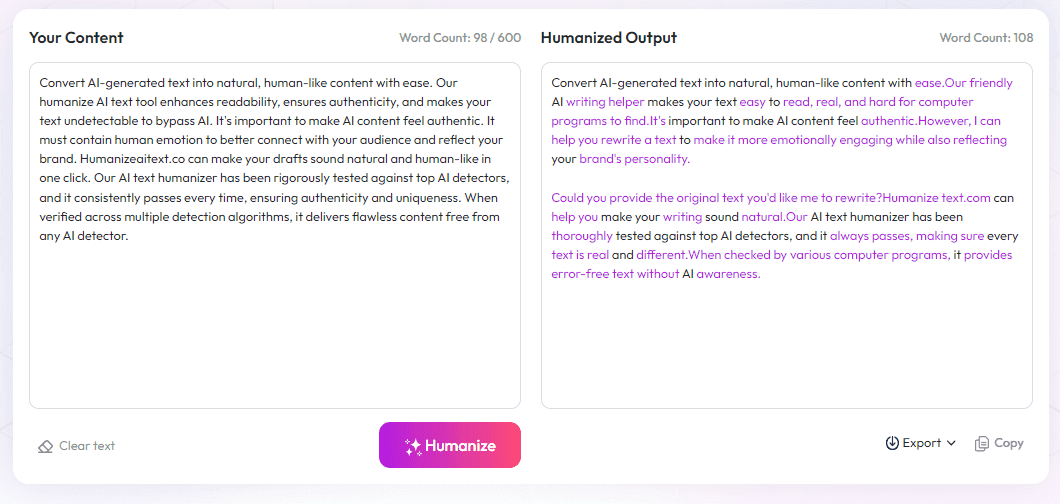Table of Contents
If you're passionate about creative writing, you might worry about how to pay for school or stand out in the crowd. Don't worry—you’re not alone, and there are scholarships that can help lighten the financial load. Keep reading, and I’ll share tips on finding the right ones and tips to boost your chances, so you can focus more on your stories and less on bills.
In this guide, you'll get a quick look at the best scholarships available now, the different types out there, and who can apply. I'll also give you simple advice to make your application stronger and point you to helpful resources to find even more opportunities.
Key Takeaways
– Many scholarships are available for creative writing majors, with awards ranging from $700 up to $12,500. Deadlines are often around March and April, so start preparing early with your best writing samples, personal statements, and recommendations.
– Scholarships come in different types, including genre-specific, demographic-focused, portfolio contests, and awards for undergrad or graduate students. Many are open to all writers, even those not yet published, but check the eligibility criteria carefully.
– Anyone passionate about writing can apply—there’s no strict requirement to have a published book. Most programs look for quality samples, dedication, and a clear goal, with some targeting first-generation students or underrepresented groups.
– Improve your chances by understanding application requirements, polishing your writing, and crafting a compelling personal story. Collect strong recommendations, track deadlines, and submit multiple applications through various platforms to increase opportunities.
– For strong applications, be honest and passionate, keep your statements focused, and avoid jargon. Highlight your achievements, proofread carefully, and provide proof of your work or awards. Follow all instructions precisely to ensure your application stands out.

1. Best Scholarships for Creative Writing Majors Right Now
If you're dreaming of turning your passion for writing into a college scholarship, you're in luck. There are dozens of opportunities available for creative writing majors, and many of them are still open for applications. Notable awards like the Sub Pop Loser Scholarship offer $6,000 to three winners, and others like the Red Kite Emerging Writers Fellowship provide $1,000 awards. Overall, scholarship amounts typically range from $700 to $6,000, with some portfolio-based contests going as high as $12,500 for top entries. Keep a close eye on deadlines—most spring deadlines fall around March 19 and 31, 2025—and prepare your best writing samples, personal statements, and letters of recommendation.
Popular platforms like (https://automateed.com/how-to-publish-a-coloring-book/) and Bold.org regularly update lists featuring current creative writing scholarships, making it easier to find options suited for your genre and background. These opportunities aren’t limited to students enrolled in specific programs; many scholarships are open to emerging writers regardless of whether they've published a book yet. Several awards also include perks beyond cash, such as mentorship, editorial support, and publication prospects, which help shape your writing career while providing financial aid.
2. Different Types of Creative Writing Scholarships
Creative writing scholarships come in a few different flavors. Some are aimed at students pursuing fiction, poetry, or nonfiction, while others support specific demographics like women in journalism or first-generation college students. There are also contests based on portfolios, where your best work in prose or poetry can earn significant prizes—like the (https://automateed.com/what-does-an-editor-do/) that can award up to $12,500.
In addition, some scholarships target writers at different stages of their careers. Undergraduate students can benefit from scholarships like the Artistic Achievement Scholarships at Eckerd College, while graduate or advanced writers might qualify for fellowships such as the NEA Literature Fellowships, which offer grants up to $50,000. Some awards recognize specific genres, whether it’s fiction, poetry, or creative nonfiction, so tailoring your submissions to fit the scholarship’s focus can boost your chances.
Finally, many scholarships don’t restrict based on major, emphasizing a passion for storytelling or poetry alone. For example, some programs open their doors to all students with a genuine interest in honing their craft, which is great news if your major is different but your writing is top-notch. And don’t forget to check the eligibility details—some scholarships might require a minimum GPA like 2.5 or a record of publication, so review the criteria carefully.

3. Who Can Apply for Creative Writing Scholarships
Anyone with a passion for writing, regardless of their major or academic background, can often apply for creative writing scholarships.
Most programs are open to undergraduates, but there are also fellowships and awards specifically targeting graduate students or emerging writers with some publication credits.
You don’t always need to have a book published; many scholarships look for a strong writing sample, a clear vision, and potential rather than a long publication history.
If you’re a student enrolled in college or planning to start soon, check the eligibility criteria—some require a minimum GPA (like 2.5 or higher), while others prioritize demographic factors such as first-generation college students or women in journalism.
Writers outside of traditional degree programs can compete for many awards—so long as they demonstrate dedication, a portfolio, or a specific interest in storytelling or poetry.
Keep an eye on special programs for underrepresented groups or non-traditional students, which often have their own sets of criteria and opportunities.
4. How to Increase Your Chances of Getting a Scholarship
First, read the eligibility details carefully so you don’t waste time on applications you’re unlikely to win.
Next, polish your writing sample — consider getting feedback from teachers or peers, or even hiring a professional editor if possible.
Show your personality through your personal statement; highlight your passion, past achievements, and what you hope to accomplish with writing.
Gather strong letters of recommendation from teachers, mentors, or editors who can vouch for your talent and dedication.
Be mindful of deadlines and start preparing your materials early—don’t rush last minute, as quality matters.
Including additional materials like a publication list, awards, or relevant experience can give you an extra edge.
Look for smaller niche scholarships too—they often have less competition but still boost your financial aid package significantly.
Finally, apply to multiple opportunities and use different platforms such as (https://automateed.com/how-to-publish-a-coloring-book/) or Niche, which update regularly.
5. Tips for a Strong Scholarship Application
Tell your story honestly and passionately — scholarship judges want to see not just talent, but your commitment and unique voice.
Keep your personal statement focused, concise, and tailored to each scholarship’s mission or focus area.
Use clear, simple language and avoid jargon; make your writing accessible and authentic.
Highlight specific achievements, such as winning a poetry contest or publishing a story online, that can serve as evidence of your potential.
Proofread multiple times or ask a trusted friend to review your application to catch errors or awkward phrasing.
Include proof of any publications, awards, or relevant experience—it can help set you apart from other applicants.
Be genuine about your goals and explain how the scholarship will help you grow as a writer.
Finally, follow application instructions carefully—some scholarships require specific formats or additional essays, so pay attention.
6. Resources to Find More Creative Writing Scholarships
Websites like (https://automateed.com/winter-writing-prompts/) and (https://automateed.com/how-to-publish-a-coloring-book/) keep updated lists of current opportunities.
Platforms such as (https://automateed.com/realistic-fiction-writing-prompts/) and (https://automateed.com/how-to-get-a-book-published-without-an-agent/) also compile extensive databases catering to different backgrounds and interests.
Follow writing organizations—many offer exclusive scholarships or contests for their members, like the (https://automateed.com/horror-story-plot/) or fiction networks.
Check with local writing groups or communities, as they sometimes sponsor awards or mentorship programs.
Stay alert to deadlines, especially in spring, since many awards have application windows closing around March and April each year.
If you’re interested in the broader landscape, consider applying for fellowships from institutions like the National Endowment for the Arts, which support talented writers at different levels—though competition is fierce.
Also, don’t forget to explore genre-specific contests—focusing on poetry, short stories, or nonfiction can sometimes improve your odds of success because they tend to have fewer applicants.
FAQs
Some top scholarships include the Creative Writing Fellowship, the Scholarly Writers Award, and university-specific scholarships. Always check deadlines and eligibility requirements to apply before the current academic year ends.
Scholarships can be awarded for poetry, fiction, non-fiction, or emerging genre writers. Some funds are specific to certain genres or writing programs, while others are open to all writing disciplines.
Eligibility varies, but most scholarships are open to current students enrolled in a creative writing program, aspiring writers with a strong portfolio, or those who demonstrate promise in the craft and need financial support.
Focus on building a strong portfolio, follow application instructions carefully, and provide a compelling personal statement. Also, seek feedback from mentors and submit early to avoid missing deadlines.



